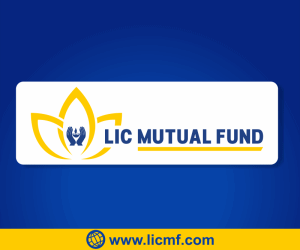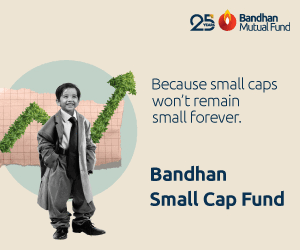Mutual Fund SIP with Online Term Plan can be a good investment strategy for layman investors

Come December Income Tax assesses across the country start looking around in the financial market for tax saving instruments to avail deduction upto Rs. 1.5 Lakhs under Section 80C of the Income Tax Act 1961. The demand for Tax saving instrument heats up during the winter; Mutual Funds Equity Linked Savings Plan (ELSS), Post Office (PO) National Saving Certificate (NSC), 5 years tax saving Fixed Deposits (FD) with bank and life insurance policies to name a few.
These life insurance policies could be one time lump-sum premium payment or may be annual premium payment mode. Whatever is the payment mode annually, half yearly, quarterly or monthly or a bullet payment, the investors tend to make mistakes while choosing the right Insurance plan for them due to the last moment rush for saving taxes. Most of the investors usually prefer the traditional format of life insurance policy – endowment plan - without realizing that these endowment plans give a return of 3% to 7% only. While endowment plans are still more popular than term plans, their popularity has decreased with the advent of online term plans. The best strategy that the layman investors could adopt is to take protection plan or what we most commonly call the Term Insurance cover and top this up with a Systematic Investment Plan (SIP) in an equity Mutual Fund Scheme.
Term insurance plan
Think about the insurance policy you have taken for your home or vehicle, you pay your insurance premium regularly however you get a return only if there is a sudden loss of asset on account of fire, theft, riot, any act of God – earthquake, flood, tsunami etc. A term insurance plan is such a cover taken by on the life of the person insured. In case of unfortunate death or disability or critical illness of the person insured, the beneficiary i.e. nominee shall receive the sum assured under the policy; however in case of survival the policyholder shall receive no return. Read more about term plans here
Features of a Term insurance policy
Protection plan covers risk only: A term insurance policy could also be called a protection plan as it is a pure risk coverage policy and it does not provide any maturity benefit or survival benefit. A term insurance policy in its purest form shall make payment to the beneficiary on occurrence of a precise event i.e. death of the insured. One might argue that they have investments that are enough for not only their children but also their grandchildren to sit at home and lead a luxurious life. However looking at the average rate of inflation in the past couple of decades, the amount spent on consumer durables, clothes, gadgets and electronics shall force you to think twice before you say that. Any amount of investment cannot compensate for the earning of the bread earners of the family.
Cheapest form of life insurance: As the sole purpose of a term insurance policy is to provide financial protection to your family in case of any death or disability or critical illness of the life of the insured and not investment, a term insurance policy is extremely cost effective. Purchase of these policies from an agent will hardy give your agent any commission on the sale in comparison to the traditional plans (endowment plan, money back guarantee plan or whole life plan) or an ULIP plan. Further if you purchase such a policy online the cost is further reduced as the agents commission is also eliminated (a direct sale of policy from the insurance to the insured).
Most suited for sole bread earners of the family: A lone earning member of the family having dependents is an ideal customer for a term insurance policy. Usually a person having dependents such as spouse, children, parents, brothers, sisters etc; financial liabilities such as home loan, car loan, personal loan etc.and good insurable heath are some of the main reasons why one should take a term insurance policy.
Tax Benefits: Just as in any other life insurance policy the premiums paid is allowed as deduction from the total taxable income under Section 80C of the Income Tax Act 1961 (Maximum amount Rs. 1.5 Lakhs per annum) and the amount received is exempted from income tax assessment under section 10 (10D) of the Indian Income Tax Act, 1961.
Systematic Investment Plan of Mutual Funds
As the name suggest an SIP is a disciplined and a systematic way of investment in mutual fund schemes. The scheme could be equity, debt, gold or a blend of these. Usually in India systematic investment in mutual funds is referred to as SIP. In India the money for investment in SIP is directly debited from the investor’s bank account on a predefined day of each month / week. The mutual fund scheme could be debt or equity oriented fund. The below matrix suggest the various types of equity and debt oriented mutual funds, the risk return Matrix and their debt equity profiling.
You may like to read: ELSS investments can help you with both: tax saving and retirement planning

Life Insurance + Investment = ULIP
Unit linked insurance policy (ULIP) took over the insurance industry in India by storm in the year 2001 when the government opened up the insurance sector to private/ foreign players (with restricted share holding) .ULIP plans were meant to provide both insurance protection and investment to the common man.
Term insurance is the best way to protect your family while mutual funds are best suited for wealth creation; a mixture of insurance and investment as seen in a ULIP plan created a chaos over last 10 – 15 years and thus ULIPs are now not favourite of Investors or good financial advisors.
Cost structure is too high: Any type of life insurance and mutual fund investment cover has certain perennial cost associated with it like mortality charges and fund management charges.
- Mortality charges are basically cost recovered by the insurer from the insured for the probability of death of the insured. Higher the age of the insured and the term of insurance higher will be the mortality charges levied by the insurance company.
- Fund management charges are chiefly the cost associated with management of the fund which will include intellectual manpower cost. Therefore, if you merge both the costs, ULIP charges are usually much higher than expenses charged by Mutual Funds.
- Agent’s commission forms a major portion of the first insurance premium paid by the insured. However, there are online Term Insurance Plans that simply charge mortality charges and fund management cost.
Liquidity: ULIPs generally have a 5 year lock in period and lack the liquidity of open ended mutual funds. Open ended Mutual funds do not have any lock-in period. However, ELSS schemes have a lock-in period of 3 years but provide tax relief under Section 80C upto र 150,000 per annum. Also note, that the ELSS has the least lock-in period compared to any other tax saving scheme.
Transparency: In contrast to open ended mutual funds ULIP lack transparency with respect to NAV, Portfolio and fund manager’s strategy. Mutual Fund publishes portfolio every month and always accessible from company website or popular MF research portals.
Let us compare endowment plan versus Mutual Fund + Term plan
By the age of 35, an Indian Male is married and has at least one or two children. He becomes an ideal candidate to take an insurance policy whether it’s a traditional insurance savings plan or a term insurance plan. He should take a cover for himself for the next 25 years i.e. till he becomes 60 years old or his retirement age whichever is applicable.

In this example, we compare the monthly investment required to get a life cover of र 1 crore for a 25 year term, if one buys an endowment plan versus a term plan. Please note that while endowment plans give survival benefits to the insured, the term plan does not give any survival benefits. Therefore, while endowment plans are combined insurance and investment products, term plans are purely insurance products. To address the investment, we will combine the term plan with a mutual fund and we will compare the maturity amounts of the endowment plan and the Mutual Fund + Term Plan. Finally, we will also address the question of tax savings. You should note the life insurance premiums are eligible for tax savings under Section 80C of Income Tax Act. Mutual fund Equity Linked Savings Schemes (ELSS) are also eligible for 80C benefits. Therefore, while the premium amount of an endowment plan will enjoy tax savings benefits, the premium of the term plan and ELSS investment will also enjoy the same benefit.
You may like to read Mutual Fund Taxation
For the sake of lesser dispute over the amount of premium paid for term or endowment policy, we have taken the insurance plan from the company with the costliest and with the highest claim settlement ratio in the industry i.e. Life insurance corporation of India (LIC of India).
To take an example of a popular insurance plan by LIC of India we have taken an endowment plan - LICs New Jeevan Anand Policy. To get a cover of Rs. 1 crore in this policy the insured will have to shell out a sum of र 4.63 lakhs annually, thus deriving a monthly outflow of र 39,000. If there is an unfortunate death of the insured before the maturity of the policy the beneficiary i.e. the nominee shall receive the sum assured, vested simple revisionary bonus, if any, and final bonus, if any. On maturity or survival of the policyholder till the end of the term the policyholder shall receive the sum assured, simple revisionary bonus, if any, and final bonus, if any. Depending upon the percentage of bonus declared each year the return on such a traditional plan would range from 3% to 7%. The table below the annual, monthly premium amounts, the death benefit and survival benefit.

On the other hand, if we take an example of LICs e-term - online term insurance plan which the insured takes for the same sum assured and tenure as the endowment plan. The insured will have to pay a premium of र 27,000 per annum or Rs. 2,200 per month for the term plan. The return on investment on the term plan for the insured is zero if the insured survives. However, unfortunately, if he dies then his nominee shall receive Rs. 1.00 Crore.
We have assumed that the insured will invest र 123,000 per annum or र 10,200 per month in a Mutual Fund Equity Linked Saving Scheme (ELSS). Why is the investment amount र 123,000? The investor can claim maximum Rs 150,000 of tax savings benefits under Section 80C of Income Tax Act. The term policy premium of र 27,000 is eligible for 80C tax savings and therefore, to avail the maximum tax savings under 80C, we will invest र 123,000 in an Mutual Fund ELSS.
Please note that, there is nothing stopping the insured from investing more in Mutual Fund ELSS. The annual ELSS investment and term premium is still much less than the annual premium paid for the endowment plan. We have assumed that the investor will get 15% compounded annual returns on his Mutual Fund ELSS investment. The table below shows the annual, monthly premium and investment amounts, the death benefit and survival benefit.

Summary
Let us summarize the comparison between the endowment policy and term policy + MF ELSS.
1. The insured gets the same life insurance cover / sum assured. In both cases, it is Rs 1. crore.
2. The annual / monthly cash outflow in the endowment policy is much higher than combined term policy + MF ELSS. In the endowment policy the cash outflow in र 4.63 lakhs per annum / र 39,000 per month. In the case of combined term policy + MF ELSS, the cash outflow is र 1.5 lakhs per annum / र 12,500 per month.
Even though the annual premium of the endowment policy is much higher than the combined premium / investment in term policy + MF ELSS, the tax savings is still the same because 80C Tax savings eligibility is capped at र 1.5 lakhs. Read Tax Planning Strategies
3. Look at the maturity amount of the endowment policy and compare it with that of the combined Term Policy + MF ELSS. The maturity amount of the combined Term Policy + ELSS is र 3.31 Crores, more than र 1 crore higher than the maturity amount of the endowment policy, र 2.29 crores. In other words, with a much smaller cash outflow, the investor is able to create much bigger corpus by opting for term policy + ELSS as opposed to an endowment policy.
4. The cash savings by opting for Term Policy + Mutual Fund ELSS instead of Endowment policy, is more than र 3 lakhs per annum, can be invested towards long term and short term financial goals, e.g. Retirement Planning, Children’s Education, Home Purchase, Vehicle Purchase, Loan prepayment etc. Even if you get a 10% compounded annual returns on the cash savings, over a 25 year horizon, you can create an additional corpus of more than र 3 crore. Please check here how ELSS can help you in saving taxes and planning your retirement
5. However, please note that endowment plans are assured benefit products, in other words on maturity the insured will get the sum assured, plus the bonuses declared by the life insurance company every year. On the other hand, in the case of term plan + MF ELSS, maturity benefits are not assured, because there are no survival benefits in term plan and mutual funds are subject to market risks.
6. Finally, a word on the 15% returns assumption for ELSS, because this assumption is a critical element in financial case for term plan + ELSS versus an endowment plan. In the last 15 – 20 years, monthly SIP in top performing ELSS would have yielded more than 20% annualized returns (please see Top Performing SIP Mutual Fund Plans - ELSS Funds, in our MF Research Section). Therefore, our assumption seems to be reasonable.
Mutual Fund Investments are subject to market risk, read all scheme related documents carefully.
Queries
-
What is the benefit of mutual fund STP
Aug 29, 2019
-
How much to invest to meet target amount of Rs 2 Crores
Aug 26, 2019
-
Can I achieve my financial goals with my current mutual fund investments
Aug 24, 2019
-
Can you tell me return of various indices
Aug 19, 2019
-
What would be the post tax return on different investments
Aug 18, 2019
-
Which Principal Mutual Fund scheme will be suitable for my retirement corpus
Aug 16, 2019
-
What is the minimum holding period for availing NCD interest
Aug 4, 2019
Top Performing Mutual Funds
Recommended Reading
Fund News
-
DSP Mutual Fund launches DSP Nifty Next 50 ETF
Dec 19, 2025 by Advisorkhoj Team
-
DSP Mutual Fund launches DSP Nifty 500 Index Fund
Dec 19, 2025 by Advisorkhoj Team
-
Kotak Mahindra Mutual Fund launches Kotak Nifty Next 50 ETF
Dec 18, 2025 by Advisorkhoj Team
-
The Wealth Company Mutual Fund launches The Wealth Company Gold ETF
Dec 16, 2025 by Advisorkhoj Team
-
Axis Mutual Fund launches Axis Gold and Silver Passive FOF
Dec 10, 2025 by Advisorkhoj Team














